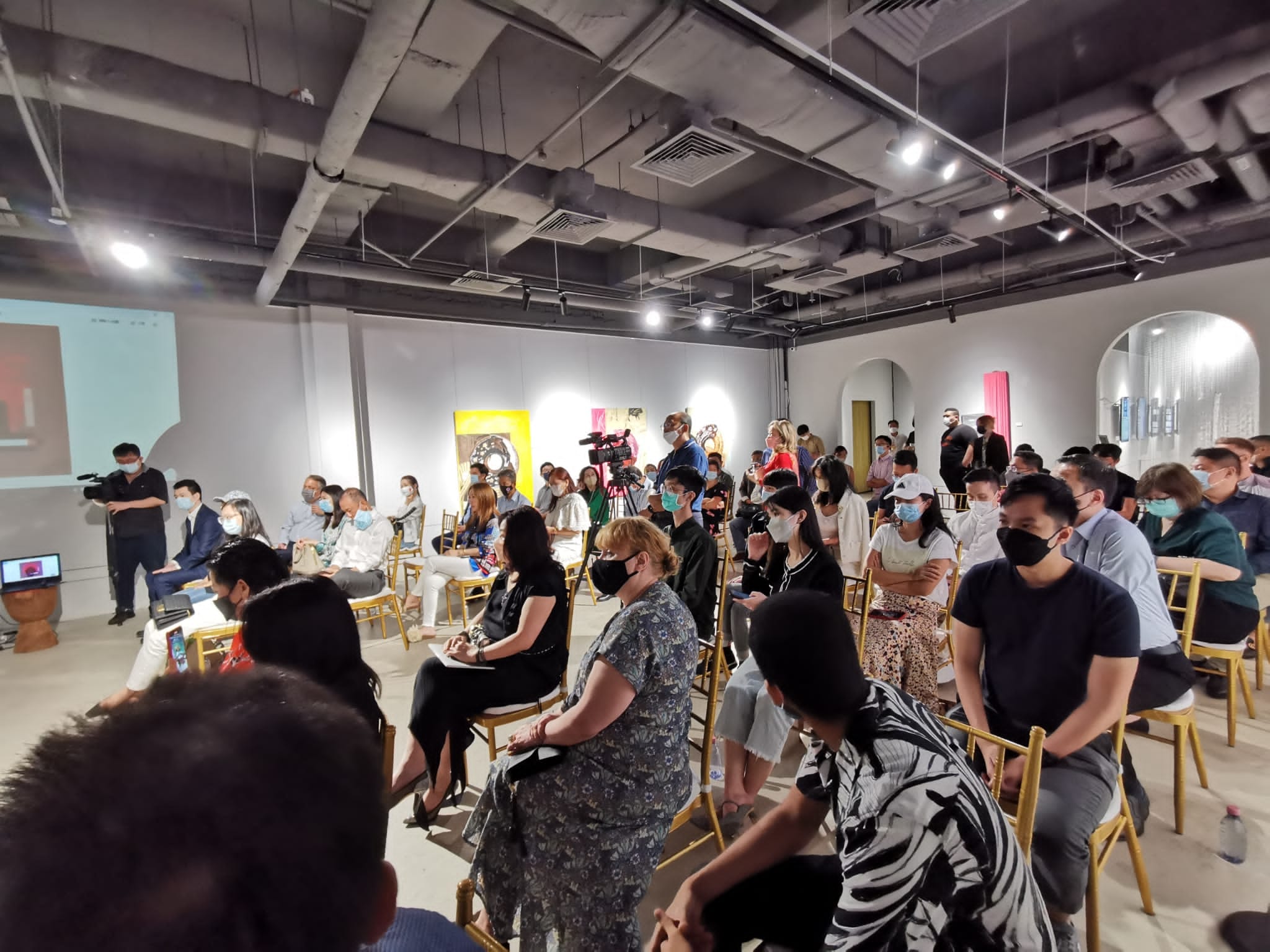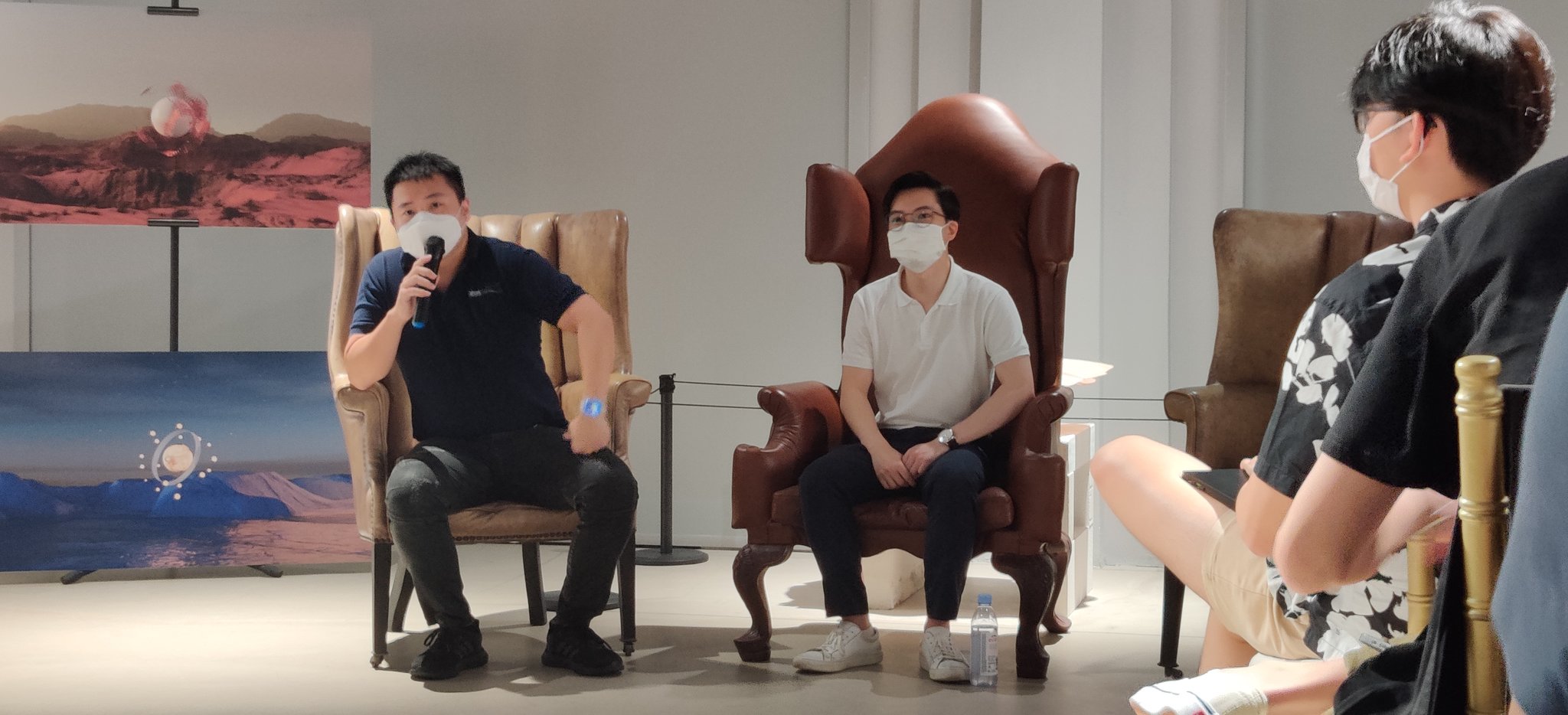Table of Contents
When it comes to Singaporean web3 Twitter accounts, there are few that rival the size of Art Now’s Web3SG page. With a mission of bringing its 121.4k (and counting) followers from the web2 world to web3, the Web3SG page has become a go-to for communities looking to build projects in the space.
As Blockhead shares a similar mission to bridge the gap between web2 and web3, we thought it’d be fruitful to sit down with Web3SG founder Jimmy Goh Ying Hao to hear about his vision for the space.
CC: Great to meet you Jimmy. Can you tell us a bit about your background?
JH: I’ve always had issues with authority. I wanted to do things my own way, so I never really went the formal work route. I’ve always worked on my own businesses and my own startups. I really wanted to create something to create value, so I created a few businesses where we managed to sell contracts to the government, Army and SingHealth. I had a pretty big cash cow and had one of the top five SMEs in Singapore – and this was just during my first year of university!
But then – I can’t exactly pinpoint when exactly – I totally lost my faith in the world. I realised all these institutions, they’re all corrupt. So I went to put all my money into crypto. From that point, I never looked back.
CC: So how exactly does web3 fit in with your anti-authoritarian viewpoint?
JH: For a lot of young people, instead of going into stocks where they feel the game is really rigged, they funnel their money into crypto. It feels like you have a chance of making it because working a normal job, as well as normal investments, you just feel like you’re never going to make it. It’s easy to get demoralizd, but in the wild west, anything is possible! It just gives us the hope that maybe, you too can retire next week!

CC: How has your journey in web3 been so far?
JH: I’ve been in web3 for three years fully and I’ve made a million dollars and lost a million dollars multiple times. It’s ridiculous! But I’ve also met many interesting people.
I’ve always loved to work, and if I’m not happy I can’t continue working. In the NFT space, it’s one of the few times where it fits perfectly.
CC: How does Web3SG fit into your vision?
JH: At the start, I considered doing just a standard NFT project because I have enough friends in the space where I can launch a project and continuously raise funds.
But that’s not exciting for me. I’m someone who loves to seize on potential, like blood in the water. I find that I’m very good at identifying high-quality things that are likely to outperform, and a normal healthy project does not excite me.
I want to create a medium where I can leverage more projects onto my web3 connections. So I decided to build this very neutral brand. I was very pushy in the space to get a lot of whitelists and get whitelists to Singaporeans.
CC: What are your views on the Singapore NFT market and the Singaporean communities in the space?
JH: I have a love and hate stance. Originally when I was purely an investor, I can honestly say that I was a very toxic person. It’s my humour – I love to spread FUD because I feel like that’s the best measure to test a project. If you cannot survive fear or lies, then you don’t deserve to survive in the wild west.
At the start when I was purely an investor, and I viewed these projects as an investment, I was a hater on Singapore projects as well as Singaporean founders because I felt that these guys are playing in a bubble. They were just networking among Singaporeans. They create these very rigid hierarchies when Singaporeans feel like if they’re a certain status, they’re above you.
gm
— Artnow (@web3sg) June 25, 2022
have a good weekend ahead.
going to be dropping some announcements next week on what we have been “building” on since bear hit. Gonna be fun!
They’re not very original either. They love to copy each other. And basically, there’s no innovation or just constantly copying and repackaging. And I found it so distasteful as a fellow Singapore founder. I told my entire alpha group that I would never invest in a Singaporean project because it’s a waste of money and nobody here is going to make it. We have no thought leaders.
But then when I entered the web3 space as a founder and met a lot of founders and got to know them as people, I realised they are also trying to make it on their own race. Some of them are very, very likeable. It was easy to demean them at arm’s length with no consequence. But I sympathise now. However, it also doesn’t mean I’ll invest in your projects. Investments must have no emotion.
CC: How is Web3SG helping Singapore projects?
JH: I want to bring high-quality projects to Singapore and slowly change our culture. I need to be able to present my brand in a way where I can package it to my web2 partners and convince them that this is a space that has both long-term investment as well as R&D.
I need the culture of the space in Singapore to change. And I want a Web3SG and myself to be leaders in the space to help slowly change the culture, and to lead the next wave of NFTs, which I believe will be purely based on utility.
I also want to develop a learn-to-earn model. A large part of the world is not very well educated, not because of a lack of education access but because they have to work and support their families. Creating a learn-to-earn model allows people to study and earn crypto to improve their skills.
CC: How do you measure utility? What’s a good example of NFT utility?
JH: There is something most people don’t know: most of the biggest brands in web3 all have the same dev team. They’re just marketers, but the guys who do the tech are a different set of people. When that happens, there can be no innovation because it’s just marketing the same stuff. Not to shit on them, because they’re extremely good at marketing their brand, but I feel that utility comes about when you can produce value out of nothing.
Let’s say Blockhead wants to launch a pass where if you hold it, the team can do an interview with you. That’s actually real-life utility, there’s a perceived value behind it, and you’re generating the value out of nothing, and it’s not fitting into any of the existing moulds.

Another example is an idea I pitched to a private jet airline pilot. Let’s say we launch 3,000 passes and sell it for 1 ETH. Back then, ETH was US$3,000. So we raise 3,000 ETH, which is US$9 million. A private jet is about US$9 million. We then charge people 0.5 ETH for a ride on the private jet. After everyone has had a ride, you still own the jet but everyone is still happy. How can you otherwise ride a private jet for 0.5 ETH? Private jet rides are way more expensive than that.
CC: What’s the biggest misconception your web2 partners have about the web3 space?
JH: First, the smaller guys such as influencers command a following on Instagram and want to monetize their fan base and launch a project. I always tell them, “Don’t do it. You’re not worth what you think you’re worth.”
A lot of them see NFTs as free money. They just want to come in and launch a “simp DAO” and want to make their money and leave. It’s ridiculous, and not worth them selling out their reputation for that.
Second, for investors, a lot of them don’t fully understand the space either. I have met a few family offices where I have to help them set up their MetaMask wallet. I even helped one of the directors of the Bank of Singapore to set up his MetaMask! They don’t know anything about it. They also ask if they can give me money to invest for them because they know about my trading record. I’m not willing to do that. I’ve made money, and I feel no stress losing my own money. But if I’m using somebody else’s money, there is so much stress when you’re down. Look at 3AC, they’re doomed after managing so many people’s money.
Finally, there are companies that want to come in and develop. I’ve been talking to a lot of these CEOs and trying to get them to degen into NFTs. When that happens, they start to show their own friends and other companies. A lot of them still get rugged.
CC: What do your Web3SG followers have to look forward to next?
JH: We’re working on a project for UNHCR (United Nations High Commissioner for Refugees), which does humanitarian work. We’re doing an NFT project for them to raise funds for refugees. We’re acting as advisors and are managing both their tech and marketing teams. I have to be very delicate about which projects I partner them with and when we launch, I’ll need to restructure it so it doesn’t look like a cash grab.
We’ve already finished settling everything behind the scenes and have connected them to most of the market. The only thing now is that I don’t want to launch them in a bear market. It doesn’t make sense because I can raise so much more money for them in a bull market.
CC: With that in mind, how are you seeing the bear market affecting your network?
JH: The issue is that too many people sitting on a loss. Even the web2 guys are down in their stocks. When they sustain too much damage to their portfolio, they’re all in the “protect your capital stage” where they’re just cutting losses, especially speculative investments. It’s very hard to get investments now. People are expecting a bounce back to a mini-bull but it’s very hard. Even volume for NFTs is at an all time low. When it dips, everybody is hoping it goes back, but after that there is no more volume and no more buyers. There’s no more money coming in, money is just going out. All we can do is prepare for a one-year bear.










